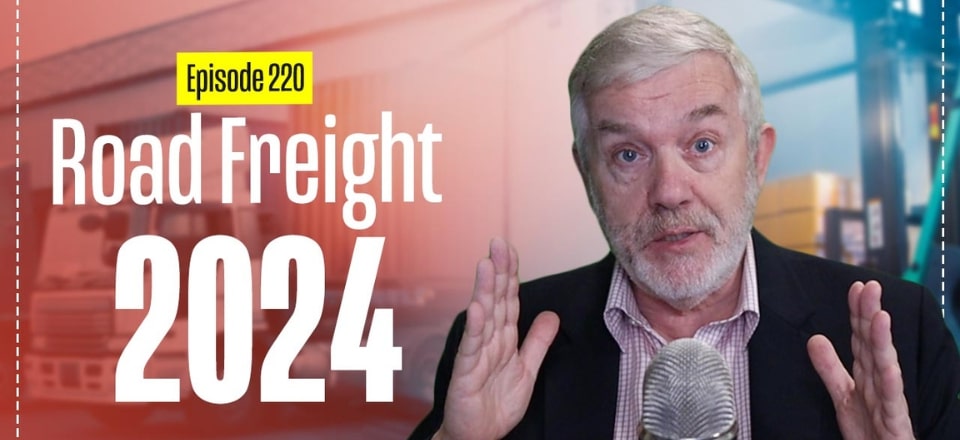Struggling with increasing road freight costs or aiming to improve your trucking service?
Identifying the key challenges in road freight is crucial for success.
The video below offers valuable insights to help you tackle these issues effectively.
Road Freight Optimization for 2024
As we look ahead to 2024, optimizing road freight operations will be crucial for efficiency and cost management. Here’s a detailed guide on what to consider for effective road freight management in the upcoming year.
Evaluating the Number of Carriers
One of the primary challenges in road freight is managing the number of carriers. In countries like Australia, securing a single carrier capable of providing nationwide coverage is often impractical. Businesses frequently find themselves using multiple carriers, which can lead to inefficiencies and increased costs. For instance, some companies operate with over 100 carriers, a situation often arising from decentralized management. This fragmentation can result in inconsistent service levels and missed opportunities for cost savings. It’s essential to assess and possibly consolidate your carrier base to enhance operational efficiency and leverage buying power. Typically, having 2 to 4 carriers is adequate for national distribution, provided you have a logistics provider managing all aspects effectively.
Revisiting Carrier Relationships
Long-standing relationships with freight carriers can be advantageous, but they also need periodic reassessment. Maintaining the same carrier for many years can lead to complacency, where neither party explores new efficiencies or innovative solutions. Regularly reviewing these relationships ensures that your carrier remains competitive in terms of rates and service quality. Instead of frequently changing carriers, consider conducting market testing or benchmarking your current rates. This approach helps identify whether your existing arrangements still provide the best value. It’s important to balance stability with a willingness to explore new options to ensure your road freight operations are as effective and cost-efficient as possible.
Balancing In-House and Outsourced Transport
Deciding between managing your own transport assets or outsourcing them is another crucial aspect of road freight. A hybrid model can often be the most effective approach. For instance, if you have high-utilization routes or specialized transport needs, managing these assets internally might be more efficient. In contrast, outsourcing less critical routes can provide flexibility and potentially lower costs. This approach allows you to maintain control over essential transport operations while taking advantage of the efficiencies offered by outsourcing. It’s important to assess your transport needs and determine which components are best managed in-house versus outsourced to optimize overall performance.
Optimizing Rate Structures
Rate structures play a significant role in managing transport costs. Simplifying the way you present your freight can make it easier for carriers to handle and reduce overall expenses. Focus on not just the per-pallet rates but also on how these rates are structured. Evaluate how your rates are broken down—whether by volume, weight, or pallet space—and ensure that these structures align with your shipping patterns. Properly structured rates can lead to substantial savings. For instance, if your shipping patterns involve varying sizes of shipments, ensure that your rate breaks are set up to favor the sizes you ship most frequently.
Enhancing Asset Utilization
Effective utilization of transport assets is another critical area. As your freight needs evolve, so should the equipment used by your carriers. Regularly assess how well transport assets are utilized in terms of both capacity and efficiency. If the equipment no longer meets your needs, discuss potential upgrades or adjustments with your carriers. Optimizing asset utilization can improve cost-effectiveness and ensure that your road freight operations are running smoothly. This might involve updating fleets to better match your requirements or adjusting logistics strategies to improve overall performance.
Reviewing Contract Terms
Finally, reviewing your contract terms is essential to ensure they meet your current needs. Many businesses operate under informal agreements, which can lead to unexpected costs and inefficiencies. Thoroughly examine your contracts, paying attention to rates, payment terms, fuel surcharges, and labor rates. A well-structured contract provides clarity and helps manage costs effectively. Regularly updating and reviewing contract terms can prevent hidden costs and ensure that your road freight operations remain cost-effective.
If you have questions or need assistance with your freight contracts, visit Logistics Bureau website: https://www.logisticsbureau.com/freight-contract-negotiation-consultants/
Related articles on this topic have appeared throughout our website, check them out:
- 10 Freight Management Mistakes and How to Avoid Them
- Freight Benchmarking: What Is It? Why Do It?
- 12 Smart Ways to Reduce Your Freight Costs
- Do You Know When it’s Time for a Freight Review?
- Is it Time for B2B Freight Providers to Learn From B2C?
Editor’s Note: The content of this post was originally published on Logistics Bureau’s website dated January 10, 2024, under the title “Road Freight 2024: What to Check to Improve Transport Costs & Service“.


